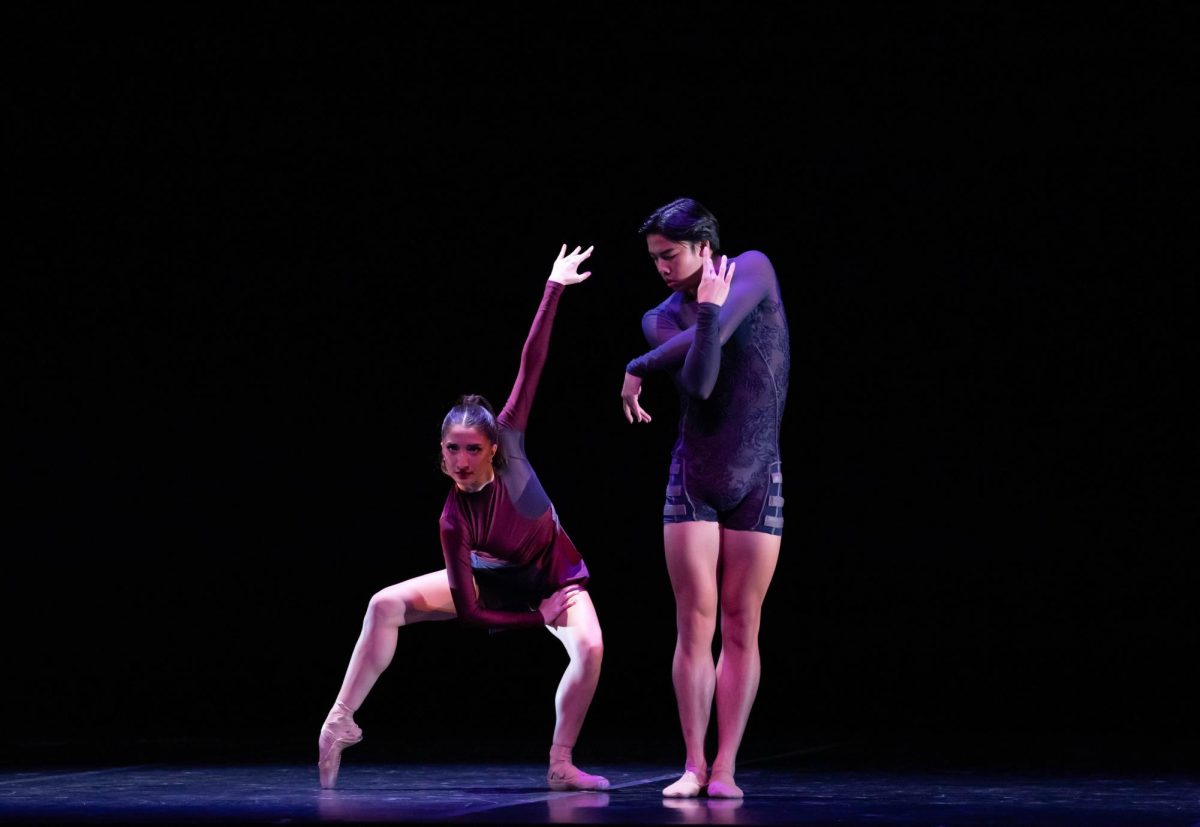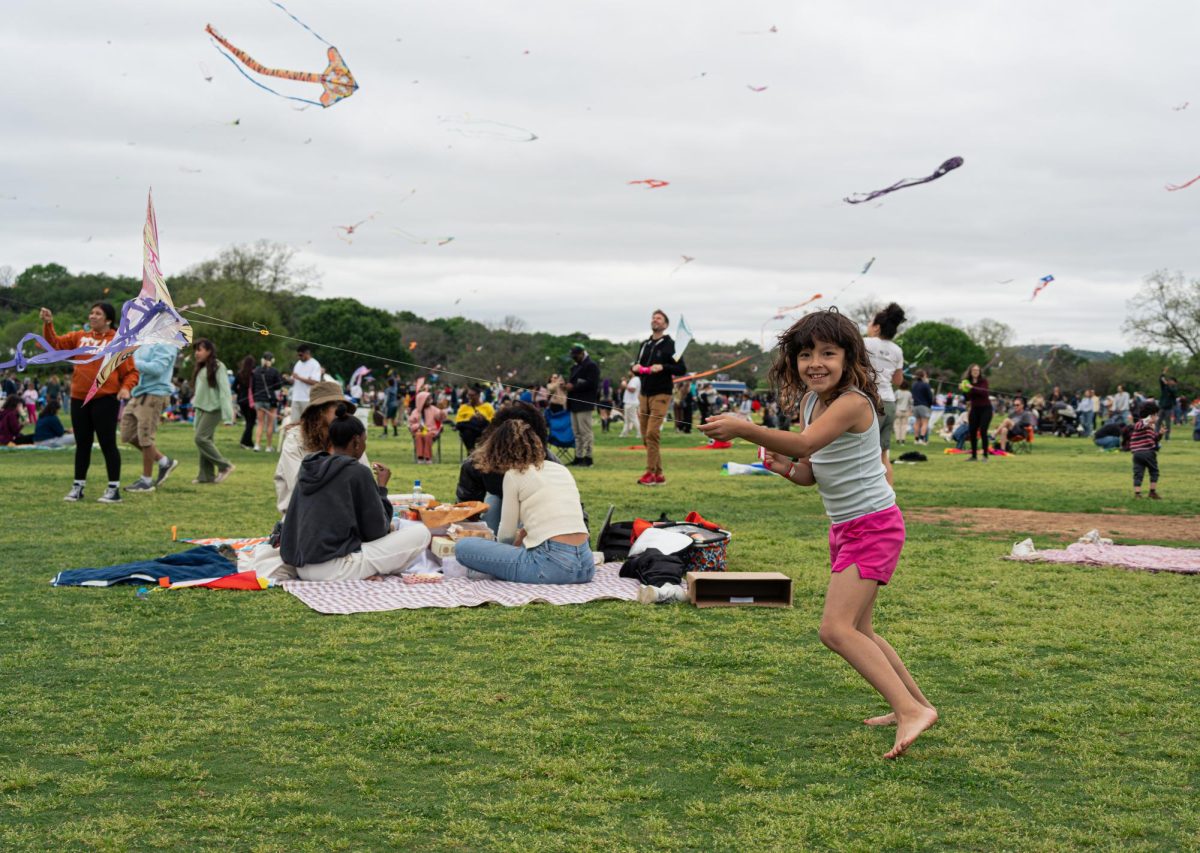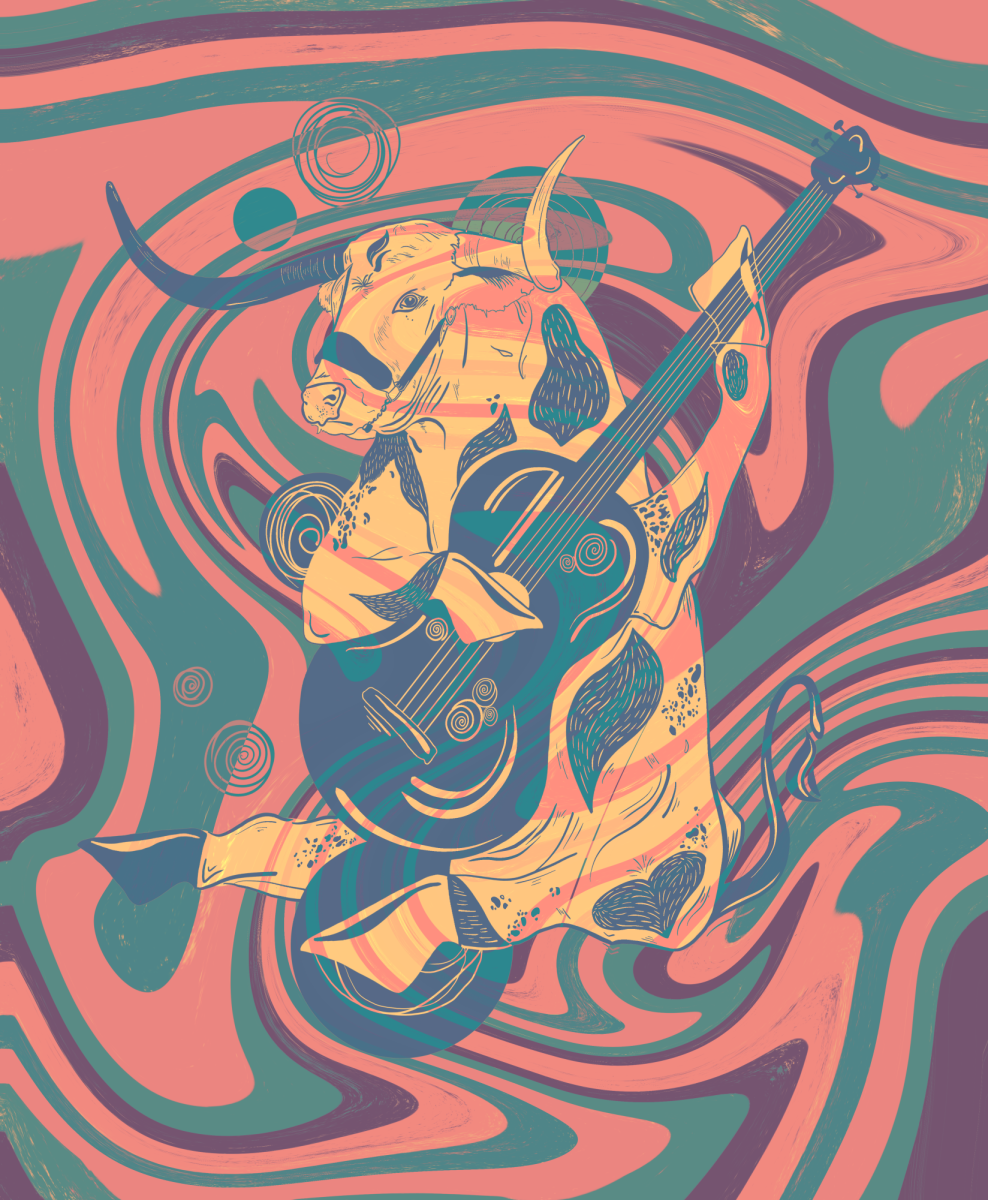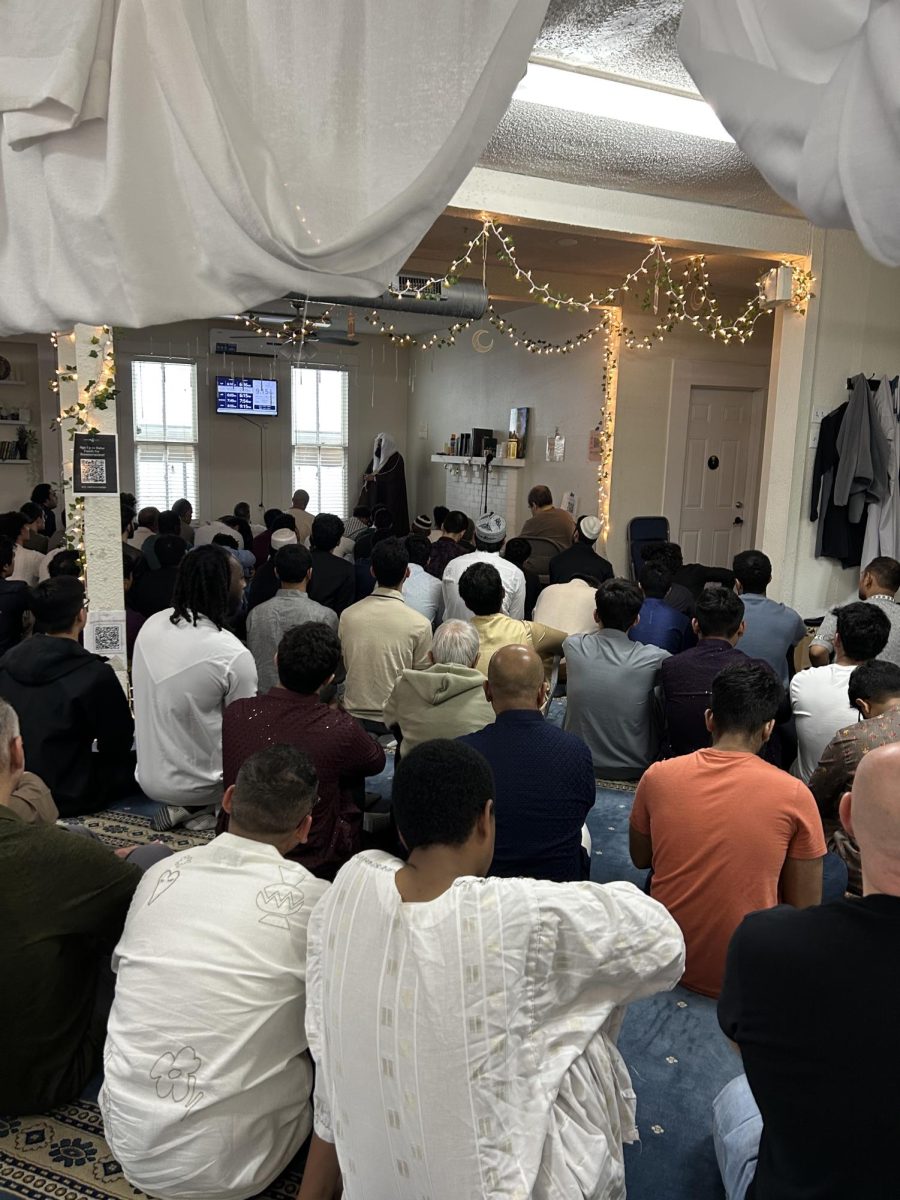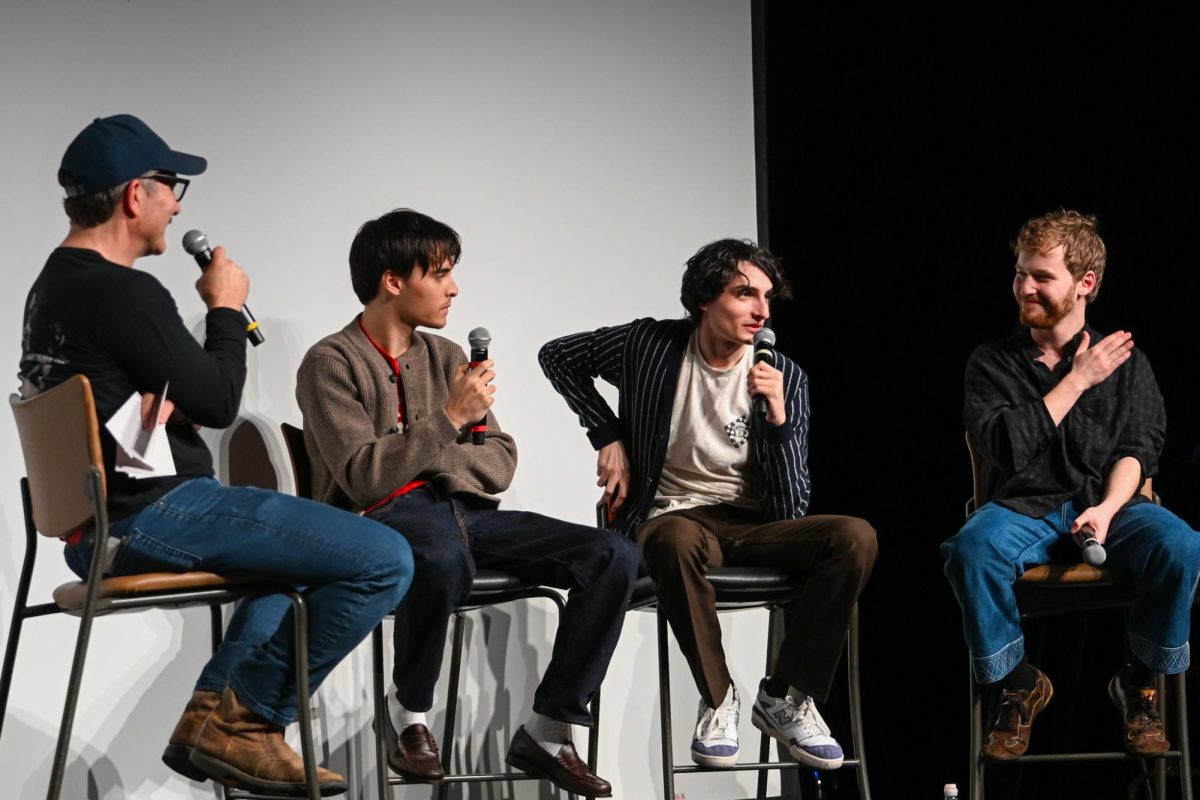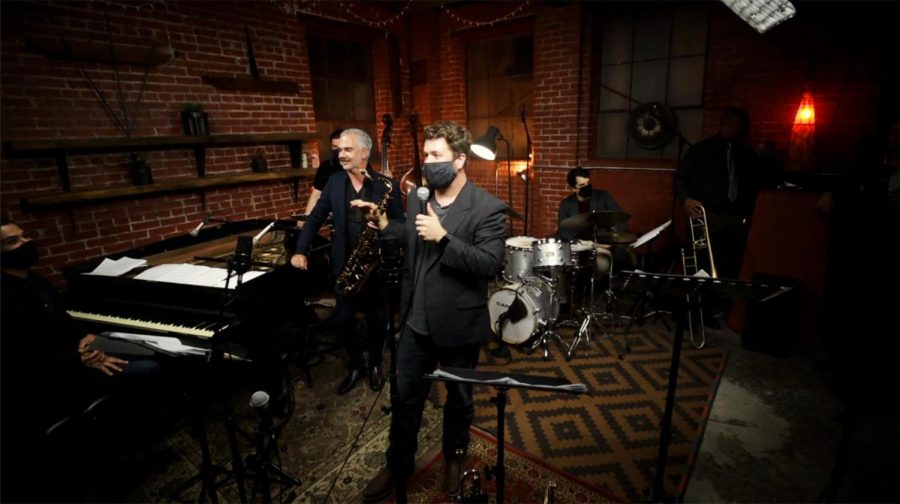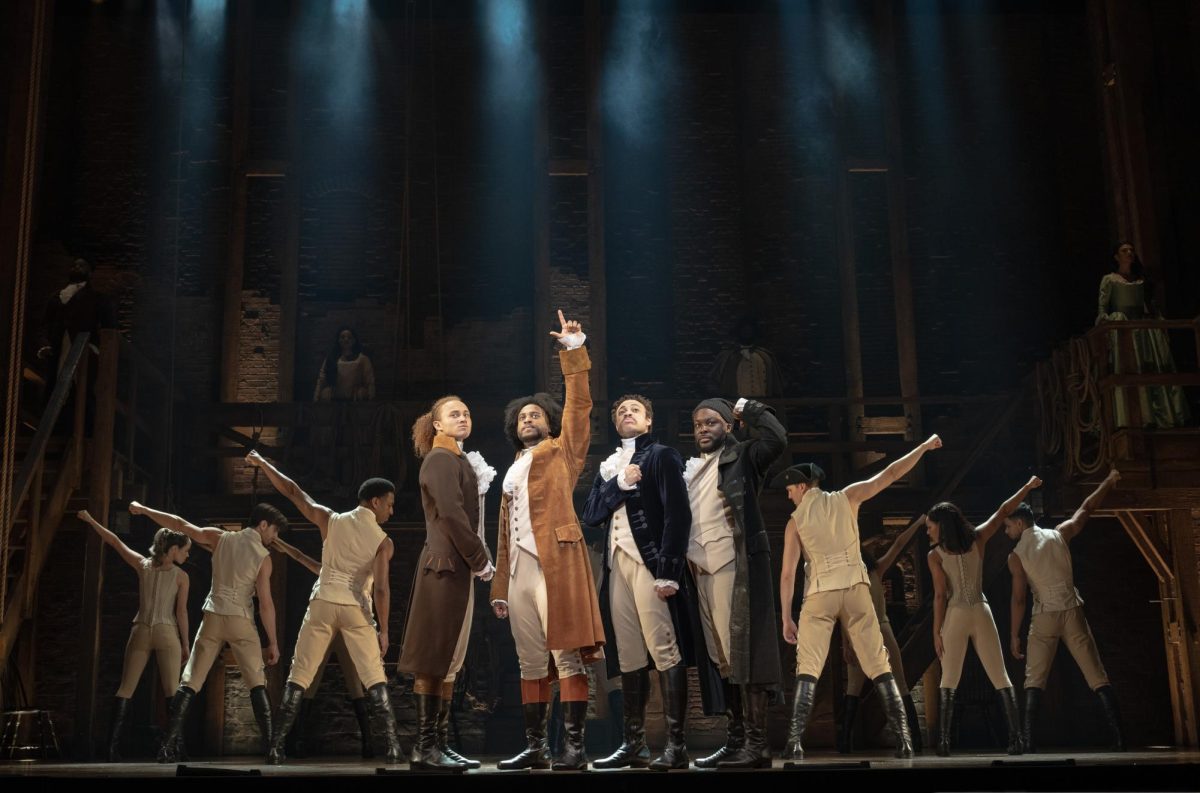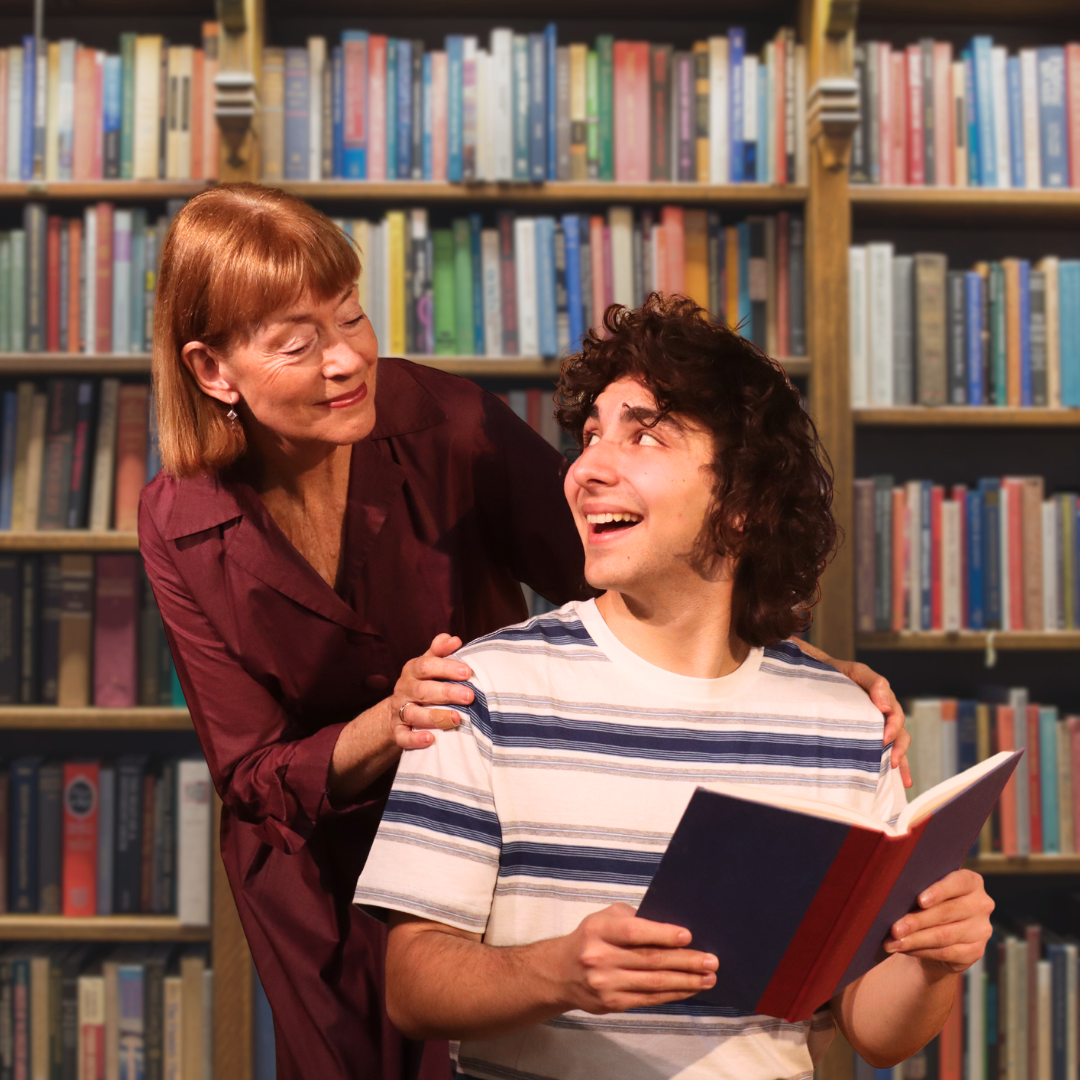Lifting his partner up while she holds her leg high, two ballerinas jump and dance over their corps de ballet, playing a more sophisticated yet mischievous version of the common childhood game of leapfrog. Combining contemporary and classical dance, Ballet Austin held the world debut of “Love’s Gentle Spring,” directed by Stephen Mills.
The ballet ran from March 28-30 at The Long Center and featured live music from the Austin Symphony Orchestra. The first half included Antonín Dvořák’s “American Quartet,” and the second section contained Bryce Dessner’s “Concerto for Two Pianos.”
Mixing whimsy and elegance, the ballet started with a live orchestra and movement behind a red curtain. As the music grew louder, the curtain was drawn, revealing dancers in bright pink and yellow costumes spread out on a patch of grass.
Despite the grass making the intricate moves imaginably more difficult, the company dancers gracefully performed the delicate moves. The ballerinas danced in pairs and appeared to skip like children — except with precisely pointed feet and long arms that made lines with meticulously placed fingers. The dancers’ expressions and fast movements played into the childlike atmosphere, capturing the audience with a perfect interpretation of what it is like to feel spring’s love.
Two dancers stood out in their orange costumes and stepped out onto the stage. The pair twirled around one another until the woman appeared to ask the man to return. As he did this, the other dancers lined the stage’s sides, completely still, and watched the interactions until the pair took their bows and the dancing picked back up. Although confusing with the previous dances, the ballerinas played a vital role as to how love played into the story.
The choreography between the dances proved very similar with the same expressions, tempo changes and each dance resembling the same view of childhood rather than different interpretations. Male and female dancers performed the same moves together, creating the image of friendship between the ballerinas, rather than the common romantic interactions often seen in ballets.
After their first bow, the curtain fell for a 20-minute intermission before a loud crack of thunder scared the crowd.
As the thunder continued, the dancers came out, moving as if in a storm with their playful pastel outfits transformed into dark and sleek body suits. Dancers surrounded two leads, leaping and performing lifts around them in center stage, engaging the audience with beautiful chaos and dark facial expressions.
As the dance continued, the music changed and the lighting turned pink as the dancers appeared to be in love. The dance briefly slowed down into classical ballet until a clock started ticking and pulled the dancers apart, signaling how time is pulling the two apart. Once again bringing love back into the story, the narration through dance showed the audience a different side to love during spring, where the weather is not always sunny and bright but rather dark — bringing accuracy to both the season itself and relationships.
The ballet gave the timeless practice new light, changing the stereotypical story of love and tragedy into one of childhood and longing. Although sometimes unengaging, the continually changing music and enticing facial expressions from the dancers drew the audience in again and again.
4 out of 5 April showers

